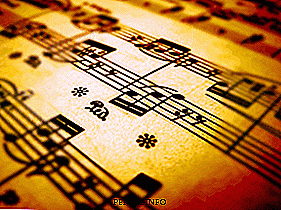
Today's post is dedicated to the topic - the main musical genres. To begin, let's define what we will consider the musical genre. After this, the genres themselves will be named, and in the end you will learn not to confuse the “genre” with other phenomena in music.
So word "genre" It is of French origin and is usually translated from this language as "species" or genus. Consequently, musical genre - This is a view or, if you will, a kind of musical composition No more and no less.
What is the difference between musical genres?
And how does one genre differ from another? Of course, not just the name. Remember the four main parameters that help identify a particular genre and not confuse it with any other, similar type of writing. It:
- type of artistic and musical content;
- style features of this genre;
- the vital purpose of the works of this genre and their role in society;
- conditions in which the performance and listening (viewing) of a musical work of a particular genre is possible.
What does all of this mean? Well, for example, take as an example such a genre as "waltz". Waltz is a dance, and it already says a lot. Once this is a dance, it means that waltz music is not played every time, but precisely when you need to dance (this is to the questions of the conditions of performance). Why dance a waltz? Sometimes for fun, sometimes to just enjoy the beauty of plastic, sometimes because waltzing is a tradition of the holiday (this is to the thesis of life purpose). Waltz as a dance is characterized by whirling and lightness, and therefore it has the same melodic whirling and elegant rhythmic three-part-time music, in which the first beat is strong as a push, and two are weak, flying (this has to do with stylistic and meaningful moments). ).
Major music genres
All genres of music with a high degree of conditionality can be divided into four categories: theater, concert, mass-everyday and religious ritual genres. Consider each of these categories separately and list the main musical genres that are included there.
- Theater genres (the main ones here are opera and ballet, besides operettas, musicals, musical dramas, vaudeville and musical comedies, melodramas, etc., are on stage)
- Concert genres (these are symphonies, sonatas, oratorios, cantatas, trios, quartets and quintets, suites, concerts, etc.)
- Mass and everyday genres (here, mainly, we are talking about songs, dances and marches in all their diversity)
- Cult and ritual genres (those genres that are associated with religious or festive ceremonies - for example: Christmas carols, carnival songs, wedding and funeral laments, spells, bells, tropari and kondaki, etc.)
We have named almost all the major musical genres (opera, ballet, oratorio, cantata, symphony, concert, sonata - these are the largest). They really are basic and therefore it is not surprising that each of these genres has several varieties.
And yet ... Do not forget that the division of genres between these four classes is very conditional. It so happens that genres wander from one category to another. For example, this happens when the real genre of musical folklore is recreated by the composer on the operatic stage (as in the Snow Maiden opera by Rimsky-Korsakov), or in some concert genre — for example, in the final of Tchaikovsky's 4th symphony, it is quoted very much famous folk song. See for yourself! If you know what this song is - write its name in the comments!

Leave Your Comment